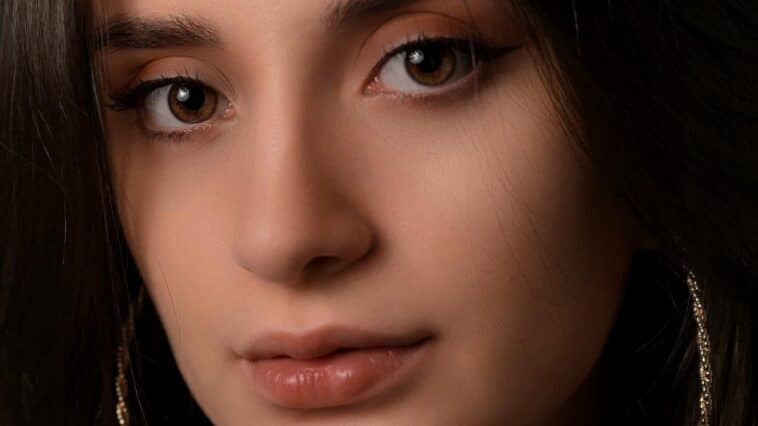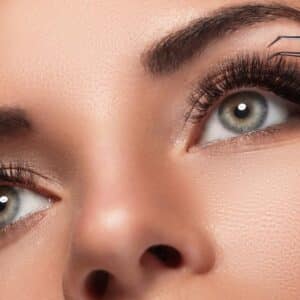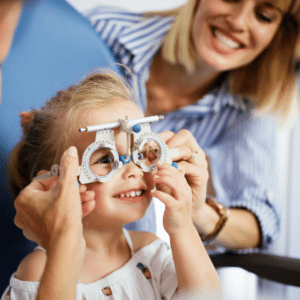Despite being the most common eye color, brown eyes are unique. Brown eyes have captivated people for generations, inspiring curiosity and admiration. Brown eyes reveal much more than simply your soul, from the genetics behind their distinct colors to the cultural relevance and scientific insights.
In this comprehensive guide, we’ll go over all there is to know about brown eyes, covering a variety of topics to guarantee you develop a better understanding and respect for this stunning eye color.
The Science of Brown Eyes
The Science Behind Brown Eyes
What Causes Brown Eyes?
Melanin, the pigment responsible for skin and hair color, gives brown eyes their hue. The amount of melanin in the iris controls how dark the brown tone is. Brown eyes contain more melanin in the front iris than blue or green eyes.
Several genes affect melanin synthesis, with the OCA2 and HERC2 genes being particularly important. These genes regulate the quantity of melanin in the iris, resulting in a wide range of brown colors, from light amber to deep, dark brown. The amount of melanin not only gives brown eyes their characteristic hue, but it also provides some UV protection.
Brown Eye Genetics
Brown eyes are a dominating attribute. Children born to brown-eyed parents are more likely to have brown eyes. However, several genes influence the complex process of eye color inheritance, leading to a wide range of eye hues even within a single family.
Previously, it was thought that brown eyes were always more dominant than blue eyes, but contemporary genetics has revealed that the situation is more complex. While brown eyes are still the most common, two brown-eyed parents may have a child with blue or green eyes, depending on the genes they share.
The Different Shades of Brown Eyes
There are various types of brown eyes. Brown eye colors range from light hazel to practically black, and each has its own distinct appeal.
Light Brown or Hazel Eyes
People frequently mistake hazel eyes for green eyes because they are light brown with green or gold flecks. This eye color changes depending on the lighting conditions, giving hazel-eyed people a stunning and varied appearance. Hazel eyes contain less melanin than darker brown eyes, allowing for more color variance.
Medium-brown eyes.
Medium brown eyes are the typical brown color seen in many different people around the world. Their evenly distributed melanin content contributes to their universally acclaimed warm, rich appearance.
Dark Brown or Almost Black Eyes
Dark brown eyes, sometimes known as black eyes, contain the most melanin. People of African, East Asian, and Native American origin are most likely to have this eye color. Dark brown eyes, with their deep, intense color, are both stunning and mysterious, often associated with strength and depth of character.
The Cultural Significance of Brown Eyes
Numerous cultures have long appreciated brown eyes. Brown eyes are often associated with beauty, strength, and wisdom in various cultures.
Brown Eyes in Literature and Art
Literature and art often portray brown eyes as soulful and expressive. Authors and artists have long utilized brown eyes to portray emotion and character, making them a popular topic for poetry, novels, and portraiture.
Brown Eyes and Personality Traits
Some cultures have the concept that the color of your eyes reflects your personality. People often perceive people with brown eyes as trustworthy, loyal, and kind. Despite the lack of scientific evidence linking these characteristics to eye color, cultural folklore and personal belief systems continue to popularize them.
Brown eyes and social perceptions
Research indicates that people perceive people with brown eyes as more trustworthy and friendly. Brown eyes, the most prevalent eye color in the world, may impact this perception by making them more recognizable and relatable to a large number of people.
The Health Benefits of Having Brown Eyes
UV Ray Protection
One of the lesser-known advantages of brown eyes is their natural resistance from damaging ultraviolet (UV) radiation. Brown eyes have a higher melanin concentration, which functions as a barrier, absorbing more light and protecting them from UV damage. People with brown eyes are less prone to acquire UV-related eye diseases, including cataracts.
Reduced risk of eye conditions.
According to studies, those with brown eyes may be less likely to develop certain eye disorders, such as macular degeneration and eye cancer. The protective properties of melanin play an important part in this. However, while brown eyes may provide some protection, everyone should take care to protect their eyes, such as wearing UV-blocking sunglasses.
Brown Eyes of Different Ethnicities
Brown eyes are the most common eye color worldwide, with distribution varying by ethnic group.
Brown eyes in African-American populations
Dark brown eyes are nearly universal among African and African-American groups. High melanin content in the iris is a frequent feature in these groups, providing both cosmetic and defensive benefits.
East Asian populations have brown eyes.
Similarly, dark brown eyes are prevalent in East Asian ethnicities. East Asian societies frequently praise the deep, rich hue of these eyes, treating eye shape and color as important parts of beauty standards.
Brown Eyes in the European Population
While lighter eye colors, such as blue and green, are more common in European people, brown eyes remain common, particularly in Southern Europe. Various locations frequently associate brown eyes with warmth and passion, contributing to Europe’s unique attractiveness.
How to Improve Brown Eyes.
Whether you want to make your brown eyes stand out or simply enhance their natural attractiveness, there are various techniques and strategies to try.
Makeup Ideas for Brown Eyes
Makeup can be an effective tool for emphasizing and enhancing the beauty of brown eyes. Here are some makeup tips, especially for brown-eyed people:
Eyeshadows with earth tones, such as bronze, gold, and copper, can enhance the warmth and richness of brown eyes.
Add a Pop of Color: Purple and blue eyeshadows can make brown eyes look more vivid by creating a stark contrast.
Brown or black eyeliner can define your eyes, while gold or golden eyeliner applied to the lower lash line can offer a delicate highlight.
Mascara: Use volumizing mascara to highlight your lashes and add depth to your brown eyes.
Clothing Colors for Brown Eyes
Certain colors of clothing can also make brown eyes look better. Wearing blue, green, and gold colors can create a stunning contrast, making your eyes the focal point of your look. Earthy tones such as olive green, chocolate brown, and burnt orange can complement brown eyes and bring out their natural warmth.
Celebrities who have brown eyes
Hollywood and other entertainment industries have long revered brown eyes. The brown eyes of many celebrities have become part of their look.
Iconic Celebrities with Brown Eyes
Johnny Depp: One of Johnny Depp’s most striking attributes is his dark, soulful brown eyes.
Beyoncé, the queen of pop music, has lovely, light brown eyes that match her bright face.
Mila Kunis is well-known for her gorgeous heterochromia, with one eye brown and the other green, which adds to her distinctive beauty.
Myths and misconceptions about brown eyes
There are various myths and misconceptions concerning brown eyes that have endured over time. Let’s refute some of the most frequent myths.
Brown Eyes are Boring
One common misconception is that brown eyes are uninteresting because of their prevalence. Brown eyes are, in fact, extremely diversified, with a vast range of tints and depths that make them anything but boring. The depth and variety of brown eyes provide limitless opportunities for admiration and enhancement.
Brown eyes don’t change color.
Another myth is that brown eyes cannot change color. While brown eyes will never turn blue or green, their appearance might vary based on lighting, clothing, and cosmetics. Furthermore, some hazel-eyed persons may observe that their eye color changes between brown, green, and gold under different lighting circumstances.
All Brown Eyes Are the Same
As previously noted, not all brown eyes are the same. Brown eye colors range from light hazel to deep, almost black hues. This diversity makes brown eyes unique to each person, adding to their attraction.
Conclusion
We should admire the lovely, dynamic, and fascinating trait of brown eyes. Brown eyes are much more than just a common eye color, with genetic roots, cultural importance, and health benefits to boot. Understanding the science, beauty, and myths surrounding brown eyes allows you to completely appreciate their distinctive characteristics and discover how to maximize their potential.
Whether you have light brown, hazel, or deep dark brown eyes, recognize that your eye color is part of what makes you distinct. Celebrate the beauty of your brown eyes, and remember that they contain a universe of depth, warmth, and expression unique to you.






